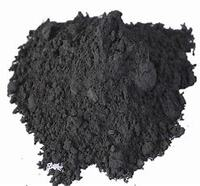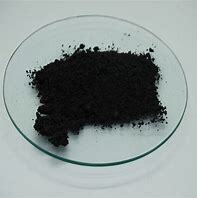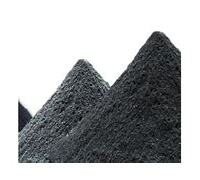In the fiercely competitive and thermally intensive world of modern manufacturing, the relentless pursuit of operational efficiency and component longevity is paramount. Industrial furnaces and sintering trays operate at the very frontier of high-temperature processing, where ordinary materials succumb to distortion, degradation, and failure. These challenges silently inflate operational costs through frequent downtime, costly replacements, and compromised product quality. However, a quintessential material solution emerges to defy these extremes: Molybdenum Alloy Powder. This advanced material is redefining the performance boundaries of high-temperature components, offering a formidable pathway to unprecedented durability and remarkable thermal efficiency. This article delves into the multifariousness of Molybdenum Alloy Powder, illustrating how its astounding properties culminate in a remarkable revolution for industrial thermal applications.
1. The Quintessential Architecture of Molybdenum Alloy Powder
Understanding the fundamental composition of Molybdenum Alloy Powder is the first step toward appreciating its monumental value proposition for high-temperature applications.
1.1 What in the World is Molybdenum Alloy Powder?
Molybdenum Alloy Powder is not a simple elemental metal; it is a meticulously engineered refractory material composed primarily of molybdenum (Mo) blended with strategic alloying elements such as Titanium (Ti), Zirconium (Zr), Carbon (C), and sometimes Rhenium (Re). These powders serve as the foundational feedstock for manufacturing high-performance components through advanced powder metallurgy techniques. Unlike conventional materials, Molybdenum Alloy Powders are specifically designed to overcome the intrinsic limitations of pure molybdenum, such as low-temperature brittleness and recrystallization embrittlement, thereby offering a superlative blend of resilience and performance that directly translates to superior component life and furnace efficiency.

1.2 The Intricate Chemical Tapestry
The preternatural properties of Molybdenum Alloy Powder are born from its sophisticated chemical composition. The base is a robust matrix of molybdenum atoms, characterized by a body-centered cubic (BCC) crystal structure. The masterstroke, however, lies in the deliberate introduction of potent alloying elements which act through solid-solution strengthening and precipitation hardening mechanisms.
The TZM Superlative: The most renowned and widely used composition is TZM alloy, which typically comprises Molybdenum with approximately 0.5% Titanium, 0.1% Zirconium, and 0.02% Carbon. Titanium and Zirconium provide superb solid-solution strengthening, while they interact with Carbon to form highly stable, fine-scale carbide precipitates (e.g., TiC, ZrC). These precipitates pin grain boundaries and dislocations, dramatically enhancing high-temperature strength and raising the recrystallization temperature.
The Mo-Re Advantage: Alloys like Mo-50Re incorporate a significant amount of Rhenium, which has the profound effect of significantly improving room-temperature ductility and lowering the ductile-to-brittle transition temperature, thereby enhancing toughness and processability.
The precise control over this chemical tapestry is what allows for the tailoring of properties to meet specific, demanding application requirements.
2. The Formidable Core Characteristics of Molybdenum Alloy Powder
The exceptional chemical structure manifests in a suite of overwhelmingly persuasive properties that make these alloys a cornerstone for the most challenging industrial environments.
2.1 A Pantheon of Physical Prowess
The physical attributes of Molybdenum Alloy Powder are truly astounding.
Extreme Thermostability: They boast an extraordinary melting point, often exceeding 2600°C, making them indispensable for high-temperature furnace components like heating elements, radiation shields, and sintering trays that operate far beyond the capabilities of steel and nickel-based superalloys.
Superior Mechanical Strength at High Temperatures: They retain a significant fraction of their room-temperature strength even at temperatures above 1100°C. This high-temperature strength and excellent anti-creep properties prevent sagging or deformation of sintering trays and furnace furniture under heavy loads.
Admirable Thermal Conductivity: Molybdenum alloys possess good thermal conductivity, ensuring efficient and uniform heat transfer throughout the component. This leads to more consistent temperature profiles in a furnace, reducing hot spots and improving product quality.
Low Thermal Expansion: Their relatively low coefficient of thermal expansion ensures dimensional stability during rapid thermal cycling. This minimizes thermal stresses and the risk of cracking, which is a common failure mode for less stable materials.
| Parameter | Unit | Standard Grade | Fine Grade (for MIM/AM) | Test Method |
| Particle Size Distribution (D50) | μm | 15 – 45 | 3 – 15 | Laser Diffraction (ASTM B822) |
| Apparent Density | g/cm³ | 3.0 – 4.0 | 2.5 – 3.5 | Hall Flowmeter (ASTM B212) |
| Tap Density | g/cm³ | 4.0 – 5.0 | 3.5 – 4.5 | (ASTM B527) |
| Powder Morphology | – | Irregular, Spheroidized | Near-Spherical | SEM Imaging |
| Flowability (Hall Flow) | s/50g | ≤ 25 | ≤ 35 | (ASTM B213) |
2.2 An Arsenal of Chemical Inertness
The chemical characteristics are equally impressive, creating a robust defense against process contamination and degradation.
Profound Stability: Molybdenum exhibits good resistance to attack by many molten metals and certain corrosive atmospheres. This inertness ensures a long service life and prevents contamination of the workload in furnace applications.
Superior Resistance to Molten Metals: Components like sintering trays exhibit excellent resistance to deformation and reaction when in contact with certain sintered materials, enhancing their longevity.
2.3 Unrivaled Functional Tenacity
The synergy of physical and chemical properties bestows unparalleled functional benefits that directly impact industrial operations.
Exceptional Longevity and Reusability: Their robust resistance to thermal distortion, creep, and wear means that components like sintering trays and furnace boats can withstand hundreds, even thousands, of thermal cycles. This single attribute is the most significant driver of cost reduction, drastically lowering consumable expenses.
Enhanced Thermal Efficiency: The combination of high-temperature strength, good thermal conductivity, and low thermal expansion allows for the design of thinner, more efficient heating elements and fixtures, leading to faster heat-up times and lower energy consumption per batch.
Dimensional Integrity: The low thermal expansion and high creep resistance ensure that components maintain their precise shape and dimensions over prolonged use, which is critical for automated production lines and consistent product quality in sintering processes.

3. A Candid Appraisal: The Merits and Limitations
A balanced perspective is paramount for making an informed investment decision and setting realistic performance expectations.
3.1 The Compelling Myriad of Advantages
The benefits of integrating Molybdenum Alloy Powder-based components into thermal processes are overwhelmingly persuasive.
Drastic Reduction in Operational Costs: The exceptional reusability and longevity of trays and furnace components make them vastly more economical over the long term compared to alternatives made from ceramics or other metals that require frequent replacement.
Enhanced Product Quality and Purity: Chemical inertness and dimensional stability at high temperatures guarantee a pristine processing environment, free from component-derived contaminants that could compromise the sintered products.
Superior Operational Resilience and Uptime: Excellent resistance to thermal shock and mechanical creep minimizes unplanned downtime and financial losses from catastrophic component failure.
Energy Efficiency: Faster heating rates facilitated by good thermal conductivity and the ability to operate at high temperatures without degradation contribute to lower energy bills and a reduced carbon footprint.
3.2 The Pragmatic Acknowledgment of Drawbacks
While formidable, Molybdenum Alloys are not a panacea for all applications.
Susceptibility to Oxidation: The most significant limitation is their propensity to oxidize rapidly in air at temperatures above 500°C, forming volatile molybdenum trioxide. This necessitates the use of protective atmospheres in furnace applications, which adds to system complexity and cost.
Higher Initial Investment: The raw material cost and the advanced powder metallurgy processing required for Molybdenum Alloy components result in a higher upfront cost per unit compared to standard ceramics or superalloys. However, the Total Cost of Ownership (TCO) is almost always lower due to vastly extended service life.
Machining and Fabrication Complexity: While powder metallurgy allows for near-net-shape manufacturing, secondary machining of sintered parts is challenging and requires specialized equipment and expertise, adding to the initial cost.
4. The Expansive Domain of Applications
The utility of components manufactured from Molybdenum Alloy Powder is instrumental in a breathtaking array of high-stakes, high-temperature industries. They are the indispensable backbone of:
High-Performance Sintering Furnaces: Used for manufacturing sintered trays, boats, pusher plates, and heating elements that convey and process metal powder compacts, technical ceramics, and advanced composites under protective atmospheres.
Heat Treatment and Brazing Furnaces: Employed as radiant tubes, muffles, and grid bars for processes requiring precise temperature control and a clean environment, such as in the aerospace and automotive industries.
Glass and Electronic Industries: Molybdenum alloys are used for electrodes in glass melting furnaces due to their resistance to molten glass, and as heat sinks and support structures in semiconductor manufacturing equipment.
Aerospace and Metallurgy: Utilized in rocket nozzles, hot-working tools for extrusion and casting dies, and other applications where extreme temperature strength and stability are non-negotiable.

5. Conclusion: A Strategic Investment in Thermal Processing Excellence
Choosing components made from Molybdenum Alloy Powder is not a simple procurement decision; it is a strategic investment in operational excellence and long-term profitability. By leveraging their unassailable combination of extreme temperature resilience, profound mechanical strength, and exceptional longevity, you are not just buying a replacement part—you are adopting a powerful tool to slash your consumable costs, enhance your product quality, and maximize your production uptime. The initial investment is swiftly amortized over countless reliable thermal cycles, delivering a remarkable Return on Investment and providing a formidable competitive edge in today’s challenging industrial landscape. It is time to let Molybdenum Alloy Powder shoulder the thermal burdens of your most demanding processes.
About MetalMummy
Metalmummy is a trusted global Molybdenum Alloy Powder supplier & manufacturer with over 12 years experience in providing super high-quality metals and metal alloy. The company export to many countries, such as USA, Canada,Europe,UAE,South Africa, etc. As a leading nanotechnology development manufacturer, Metalinchina dominates the market. Our professional work team provides perfect solutions to help improve the efficiency of various industries, create value, and easily cope with various challenges. If you are looking for Molybdenum Alloy Powder, please feel free to contact us.
Tags: ferro molybdenum powder,tzm powder
